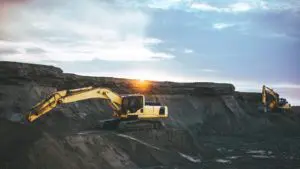New data from the U.S. Bureau of Labor Statistics (BLS) highlights an increasingly urgent challenge for the mining sector: labor costs are rising while productivity is declining. Similar patterns are reflected in Costmine’s Mining Salaries, Wages and Benefits Survey—available for both the U.S. and Canada. These annual reports, part of Mine Labor Service, provide verified, site-level compensation data across the mining workforce, covering surface and underground operations, processing plants, exploration crews, and support services.
In addition to the surveys, Mine Labor Service includes an interactive online tool that allows users to benchmark wages and benefits by job title, region, union status, and operation type. Together, the reports and tool support informed decision-making for budgeting, negotiations, and workforce planning in a labor market that remains highly competitive.
In its latest annual report on industry productivity and costs, the BLS outlines how key segments of the U.S. mining industry underperformed in 2024, revealing a disconnect between wage growth and operational output that is putting pressure on margins across the sector.
According to the BLS, labor productivity declined in two of the three major mining industry categories. The sharpest drop occurred in “mining except oil and gas,” where output fell by 5.2% while total hours worked slightly increased. This 5.7% decline in productivity suggests that additional labor is not translating into better performance. Meanwhile, the only segment to post a productivity gain—oil and gas extraction—saw a modest increase of 0.2%, driven by a 2.1% increase in output and a nearly equivalent rise in hours worked.
Table 1. Recent mining industry labor productivity, unit labor costs, and related data

The report also points to widespread cost escalation. Unit labor costs rose across all three-digit NAICS mining categories. The largest increase was in support activities for mining, which experienced an 18.5% spike in unit labor costs in 2024—driven by a 12.4% increase in hourly compensation. The other mining industries showed similar increases in unit labor and hourly compensation, except metal ore mining, where labor compensation increased unit labor costs. Analysis of base hourly wages by role in Costmine’s data revealed similar increases from 2023 to 2024, with an overall increase of 3.9% for mining, except oil and gas. These trends suggest that wage pressure, while necessary to attract and retain talent, is not being matched by gains in output or efficiency.
Looking at the longer-term picture, BLS data from 2019 to 2024 shows that oil and gas extraction was the only mining segment to achieve consistent productivity growth, averaging 5.3% per year. Output in that sector rose 1.8% annually over the five-year period. By contrast, coal mining output fell by 6.7% annually, and metal ore mining also declined. In fact, hours worked remained below pre-pandemic levels in four out of five detailed mining subsectors, with support activities showing the steepest contraction at 5.4% per year.

The BLS notes that while overall mining productivity remains above pre-pandemic levels, much of that gain was likely driven by high commodity prices—not operational improvements. As markets stabilize, productivity metrics are expected to return to historical averages, bringing labor inefficiencies back into focus.
Sourced from US Bureau of Labor Statistics. (2024, April 24). https://www.bls.gov/news.release/pdf/prin.pdf
That’s why detailed, up-to-date compensation data is more important than ever—and why Mine Labor Service has become a trusted resource for mining companies navigating today’s workforce dynamics. It brings together the U.S. and Canadian editions of the Mining Salaries, Wages and Benefits Survey with a flexible benchmarking tool, helping operators align labor investment with performance goals and manage workforce costs more effectively.
Whether you’re budgeting for the year ahead, negotiating labor contracts, or aiming to stay competitive in a tight labor market, Mine Labor Service equips you with the insight needed to make informed, confident decisions.
For more information, visit: https://www.costmine.com/mine-labor-service/























